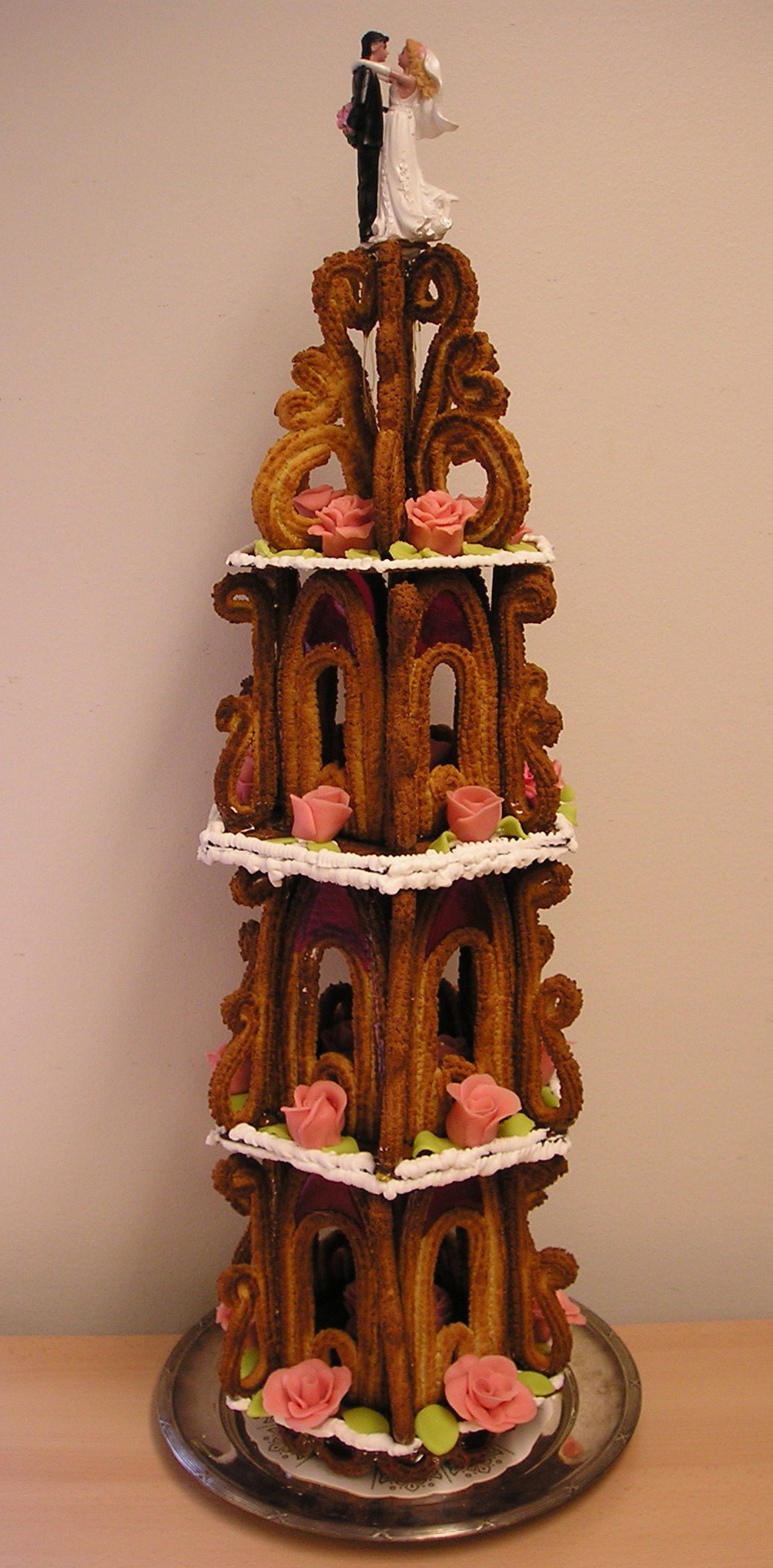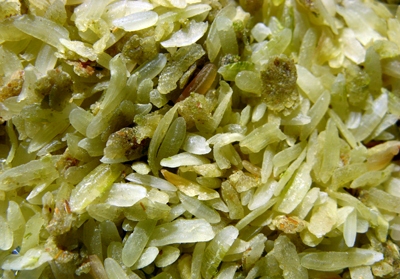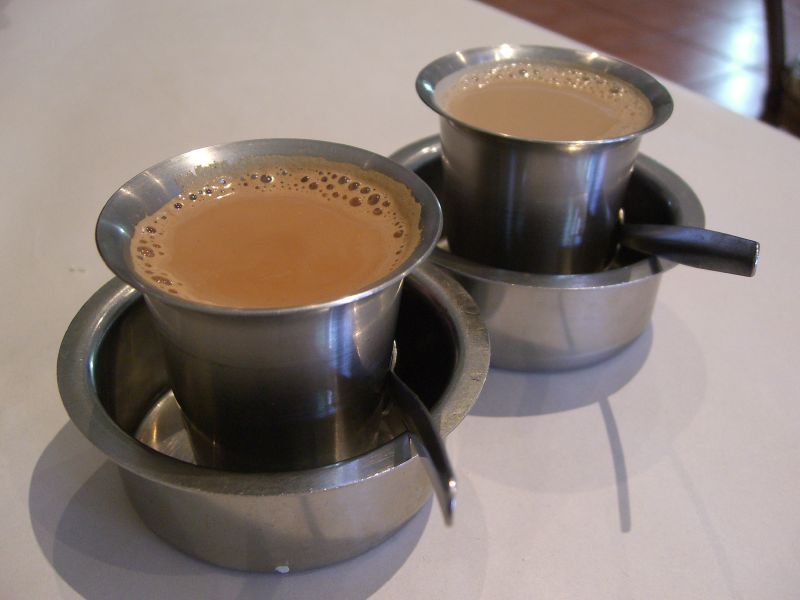|
Panocha Mani
''Bagkat mani'', ''panutsang mani'', ''panutsa'', or ''samani'' is a Filipino brittle confection made with muscovado sugar or '' sangkaka'' (or jaggery), whole peanuts, and butter (or margarine). It can also be made with whole pili nuts. It is similar to '' bagkat'', another Filipino confection made from ground roasted or fried nuts and sugar, but the latter has a chewy texture. It is also sometimes called piñato mani, piñato de Cebu, or simply piñato in the Visayas Islands (not to be confused with piñato de pinipig from Samar Samar ( ) is the third-largest and seventh-most populous island in the Philippines, with a total population of 1,909,537 as of the 2020 census. It is located in the eastern Visayas, which are in the central Philippines. The island is divided in ..., which is a similar snack made with crispy pinipig rice and peanuts). See also * Pinasugbo - A Filipino dessert made from deep-fried bananas that are coated with caramelized sugar and sesame seeds ... [...More Info...] [...Related Items...] OR: [Wikipedia] [Google] [Baidu] [Amazon] |
Confectionery
Confectionery is the Art (skill), art of making confections, or sweet foods. Confections are items that are rich in sugar and carbohydrates, although exact definitions are difficult. In general, however, confections are divided into two broad and somewhat overlapping categories: baker's confections and sugar confections. Baker's confectionery, also called flour confections, includes principally sweet pastries, cakes, and similar Baking, baked goods. Baker's confectionery excludes everyday Bread, breads, and thus is a subset of products produced by a baker. Sugar confectionery includes candies (also called ''sweets'', short for ''sweetmeats'', in many English-speaking countries), candied nuts, chocolates, chewing gum, bubble gum, pastillage, and other confections that are made primarily of sugar. In some cases, chocolate confections (confections made of chocolate) are treated as a separate category, as are sugar-free versions of sugar confections. The words ''candy'' (Canada ... [...More Info...] [...Related Items...] OR: [Wikipedia] [Google] [Baidu] [Amazon] |
Pili Nuts
Pili may refer to: Common names of plants * ''Canarium ovatum'', a Philippine tree that is a source of the pili nut * ''Heteropogon contortus'', a Hawaiian grass used to thatch structures Places * Pili, Camarines Sur, is a municipality in the Philippines * Pili, barangay in Danao, Cebu * Pili, (or , 'Pili Hill'), another name for Acamarachi, a volcano in Chile * Pili Nadi, a stream or small river that flows through Jaunpur, Uttar Pradesh; tributary of the Gomti River Other uses * Pili, another name for jianzi, a traditional Chinese sport * ''Pili'' (film), nominated for the BAFTA Award for Outstanding Debut by a British Writer, Director or Producer in 2018 * Pili line, a Hawaiian royal house ** Pili, short form of Pilikaʻaiea, ruler or of Hawaii, founder of the Pili line * Pili, plural of Pilus, a cellular organelle * ''Pili'' (TV series), a puppet television show from Taiwan * Perak Perak (; Perak Malay: ''Peghok'') is a States and federal territories of Malaysia, ... [...More Info...] [...Related Items...] OR: [Wikipedia] [Google] [Baidu] [Amazon] |
Caycay
Caycay () is a Filipino crunchy layered cookie coated in syrup (''latik'') or honey and rolled in coarsely ground toasted peanuts. It originates from the islands of Bohol and Cebu and is a common specialty in the southern Visayas islands and Mindanao. The name comes from the verb ''kaykay'' which means "to dig up" in the Cebuano language, in reference to the step of coating the cookies in ground peanuts. Some versions coat the cookies in sesame seeds instead of peanuts. See also *Panocha mani * Pinasugbo * Silvanas *List of cookies This is a list of notable cookies (American English), also called biscuits (British English). Cookies are typically made with flour, egg, sugar, and some type of shortening such as butter or cooking oil, and baked into a small, flat shape. Co ... References {{DEFAULTSORT:Caycay Peanut desserts Philippine cookies ... [...More Info...] [...Related Items...] OR: [Wikipedia] [Google] [Baidu] [Amazon] |
Pinasugbo
''Pinasugbo'', also known as ''consilva'', is a Filipino banana chip dessert made from thinly sliced saba bananas that are deep-fried and coated with caramelized sugar and sesame seeds. It originates from the Hiligaynon people of the Western Visayas islands. It is traditionally sold in white paper cones. See also * Panocha mani * Banana cue * Camote cue Camote cue or camotecue is a popular snack food in the Philippines made from ''camote'' (sweet potato). Slices of ''camote'' are coated with brown sugar and then fried, to cook the potatoes and to caramelize the sugar. It is one of the most ... * Maruya * Turon References Banana desserts Deep fried foods Philippine desserts Visayan cuisine Snack foods Street food {{philippines-dessert-stub ... [...More Info...] [...Related Items...] OR: [Wikipedia] [Google] [Baidu] [Amazon] |
Pinipig
''Pinipig'' is a flattened rice ingredient from the Philippines. It is made of immature grains of glutinous rice pounded until flat before being toasted. It is commonly used as toppings for various desserts in Filipino cuisine, but can also be eaten plain, made into cakes, or mixed with drinks and other dishes. Production ''Pinipig'' is made solely from glutinous rice (''malagkit'' or "sticky" rice). The grains are harvested while still green. They are husked and the chaff is separated from the grain (traditionally using large flat winnowing baskets called ''bilao''). The resulting bright green kernels are then pounded in large wooden mortars and pestles until flat. They are then toasted dry on pans or baked until crisp. Description ''Pinipig'' are characteristically light green in color when fresh, but usually become yellowish white to brown when toasted. They superficially resemble grains of oats, and are often confused with puffed rice. The texture is crunchy on the ... [...More Info...] [...Related Items...] OR: [Wikipedia] [Google] [Baidu] [Amazon] |
Samar
Samar ( ) is the third-largest and seventh-most populous island in the Philippines, with a total population of 1,909,537 as of the 2020 census. It is located in the eastern Visayas, which are in the central Philippines. The island is divided into three provinces: Samar (formerly Western Samar), Northern Samar, and Eastern Samar. These three provinces, along with the provinces on the nearby islands of Leyte and Biliran, are part of the Eastern Visayas region. About a third of the island of Samar is protected as a natural park, known as the Samar Island Natural Park. Many names, such as ''Samal'', ''Ibabao'', and ''Tandaya'', were given to the island prior to the arrival of the Spaniards in 1596. During the early days of Spanish occupation, Samar was under the jurisdiction of Cebu. It later became part of Leyte in 1735 until its separation to become a distinct province named Samar in 1768. On June 19, 1965, through Republic Act No. 4221, Samar was divided into three provi ... [...More Info...] [...Related Items...] OR: [Wikipedia] [Google] [Baidu] [Amazon] |
Piñato De Pinipig
''Bagkat mani'', ''panutsang mani'', ''panutsa'', or ''samani'' is a Filipino brittle confection made with muscovado sugar or ''sangkaka'' (or jaggery), whole peanuts, and butter (or margarine). It can also be made with whole pili nuts. It is similar to '' bagkat'', another Filipino confection made from ground roasted or fried nuts and sugar, but the latter has a chewy texture. It is also sometimes called piñato mani, piñato de Cebu, or simply piñato in the Visayas Islands (not to be confused with piñato de pinipig from Samar, which is a similar snack made with crispy pinipig rice and peanuts). See also * Pinasugbo - A Filipino dessert made from deep-fried bananas that are coated with caramelized sugar and sesame seeds * Caycay Caycay () is a Filipino crunchy layered cookie coated in syrup (''latik'') or honey and rolled in coarsely ground toasted peanuts. It originates from the islands of Bohol and Cebu and is a common specialty in the southern Visayas islands and ... [...More Info...] [...Related Items...] OR: [Wikipedia] [Google] [Baidu] [Amazon] |
Visayas Islands
The Visayas ( ), or the Visayan Islands ( Visayan: ''Kabisay-an'', ; Filipino: ''Kabisayaan'' ), are one of the three principal geographical divisions of the Philippines, along with Luzon and Mindanao. Located in the central part of the archipelago, it consists of several islands, primarily surrounding the Visayan Sea, although the Visayas are also considered the northeast extremity of the entire Sulu Sea. Its inhabitants are predominantly the Visayan peoples. The major islands of the Visayas are Panay, Negros, Cebu, Bohol, Leyte and Samar. The region may also include the provinces of Palawan, Romblon, and Masbate, whose populations identify as Visayan and whose languages are more closely related to other Visayan languages than to the major languages of Luzon. There are four administrative regions in the Visayas: Western Visayas (pop. 4.73 million), Negros Island Region (pop. 4.76 million), Central Visayas (6.54 million) and Eastern Visayas (4.5 million). Etymology Th ... [...More Info...] [...Related Items...] OR: [Wikipedia] [Google] [Baidu] [Amazon] |
Cebu
Cebu ( ; ), officially the Province of Cebu (; ), is a province of the Philippines located in the Central Visayas region, and consists of a main island and 167 surrounding islands and islets. The coastal zone of Cebu is identified as a site of highest marine biodiversity importance in the Coral Triangle. Its capital and largest city is Cebu City, nicknamed "the Queen (Catholic) City of the South" having the Second Cardinal, the oldest city and first capital of the Philippines, which is politically independent from the provincial government along with Mandaue and Lapu-Lapu City. The Cebu Metropolitan Area or Metro Cebu is the third largest metropolitan area in the Philippines (after Metro Manila and Metro Davao) with Cebu City as the main center of commerce, trade, education and industry in the Visayas as well as the regional center of Central Visayas. Being one of the most developed provinces in the Philippines, in a decade it has transformed into a global hub for b ... [...More Info...] [...Related Items...] OR: [Wikipedia] [Google] [Baidu] [Amazon] |
Sangkaka
Panela () or rapadura (Portuguese pronunciation: ) is an unrefined whole cane sugar, typical of Latin America. It is a solid form of sucrose derived from the boiling and evaporation of sugarcane juice. Panela is known by other names in Latin America, such as ''chancaca'' in Chile, Bolivia, and Peru, ''piloncillo'' in Mexico (where ''panela'' refers to a type of cheese, ''queso panela''). Just like brown sugar, two varieties of ''piloncillo'' are available; one is lighter () and one darker (''oscuro''). Unrefined, it is commonly used in Mexico, where it has been around for at least 500 years. Made from crushed sugar cane, the juice is collected, boiled, and poured into molds, where it hardens into blocks. It is similar to jaggery, which is used in South Asia. Both are considered non-centrifugal cane sugars. Panela is sold in many forms, including liquid, granulated, and solid blocks, and is used in the canning of foods, as well as in confectionery, soft drinks, baking, and v ... [...More Info...] [...Related Items...] OR: [Wikipedia] [Google] [Baidu] [Amazon] |
Muscovado
Muscovado is a type of partially refined to unrefined sugar with a strong molasses content and flavour, and dark brown in colour. It is technically considered either a non-centrifugal cane sugar or a centrifuged, partially refined sugar according to the process used by the manufacturer. Muscovado contains higher levels of various minerals than processed white sugar. Its main uses are in food and confectionery, and the manufacturing of rum and other forms of alcohol. The largest producer and consumer of muscovado is India. Terminology The English name "muscovado" is derived from a corruption of Portuguese ' (unrefined sugar). The Indian English names for this type of sugar are ''khandsari'' and ''khand'' (sometimes spelled ''khaand''). There is no legal definition of muscovado, and no international standards for it such as ''Codex Alimentarius'' or ''Protected Designation of Origin''. This has led to manufacturers calling various sugar products "muscovado", and has led to conf ... [...More Info...] [...Related Items...] OR: [Wikipedia] [Google] [Baidu] [Amazon] |




